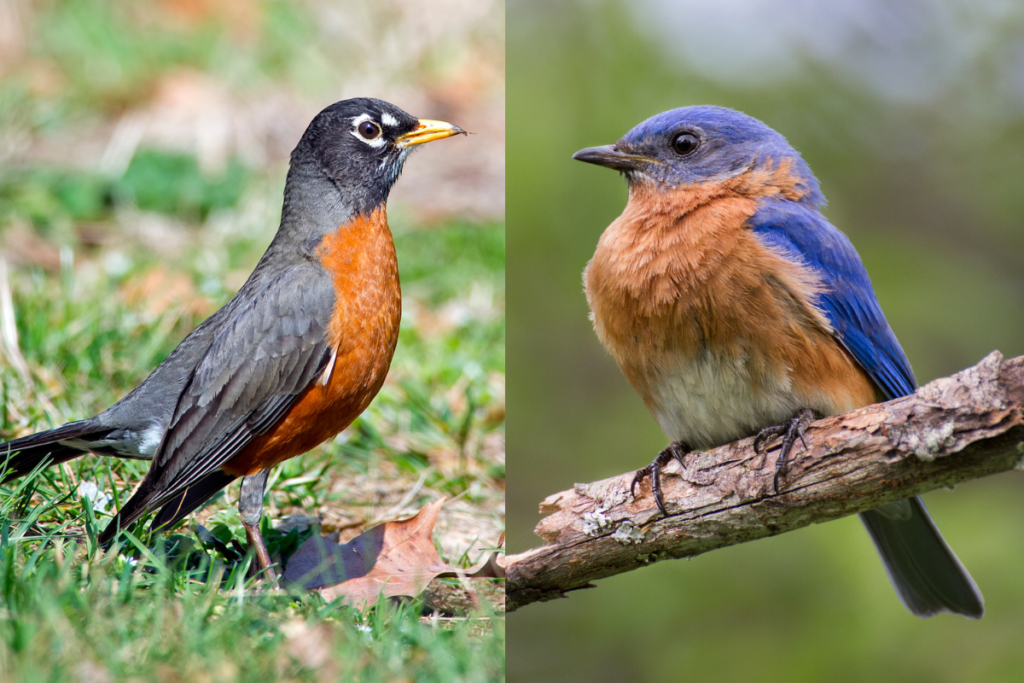
Robins and bluebirds are common native birds to North America. An everyday observer can easily get these two birds confused. In fact, many people wonder if a bluebird is a robin, or if robins and bluebirds are the same. I have been actively birdwatching for almost 20 years and I have a particular interest in bluebirds. There is definitely a big difference between these two birds, and that is what we’ll talk about in today’s article – robins vs. bluebirds. What is the difference between the American Robin and the Eastern Bluebird?
American Robins and Eastern Bluebirds are both North American songbirds in the thrush family. Robins are larger with black feathers, a red belly, and a yellow beak. Bluebirds are smaller with blue feathers, an orange chest, and a white underbelly. Robins nest in trees and bluebirds nest in natural cavities or nest boxes.
In this article, we will discuss the differences between these two birds, where they live, and where you can find them in their natural habitat.
Physical and Dietary Differences Between Robins and Bluebirds
The American Robin (Turdidus migratorius) and the Eastern Bluebird (Sialia sialis) are both a part of the thrush family of birds (Turdidae). As a general rule, birds in the thrush family are small-medium sized songbirds found around the world that spend significant amounts of time on the ground eating insects, invertebrates, and fruit.
While the American Robin and the Eastern Bluebird both fall into this general category of birds, they have significant differences. Take the robin for example.
American Robin – Characteristics, Diet, and Nesting Habits
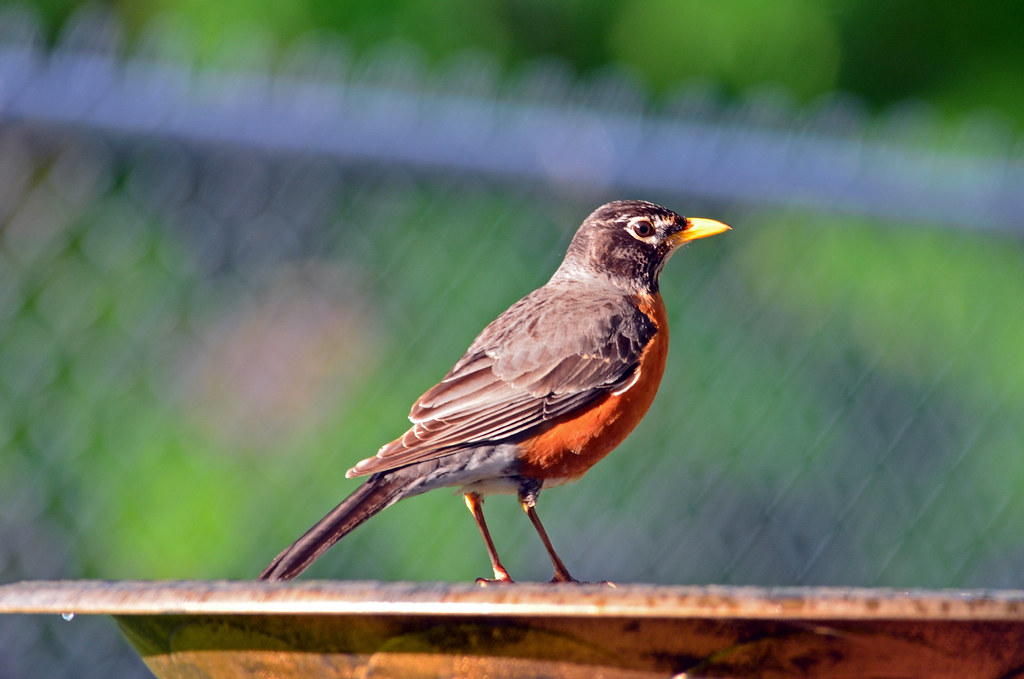
Mature American Robins (both male and female) are between 8-11 inches in height and weigh around 3 ounces. They have black feathers, a bright red breast, and a yellow beak.
During the nesting season, robins spend the major of their day hunting for earthworms and plucking them from the ground. They also eat spiders, snails, and berries. Fruit and berries make up a larger portion of their diet during the winter when insects are scarce.
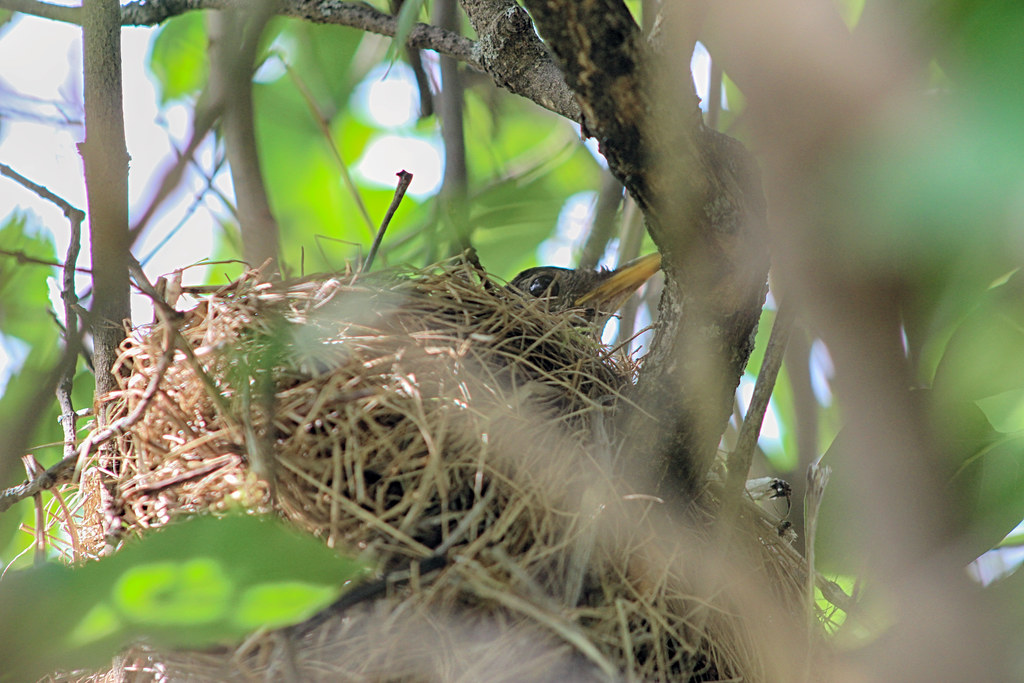
American Robins build a cup-shaped nest in various trees where 3 or 4 branches come together. Although nesting in trees is the norm, robins sometimes do build nests in house eaves, gutters, and on top of light fixtures. Robins build up to three nests a year and the nests usually contain 3-5 sky blue eggs (source).
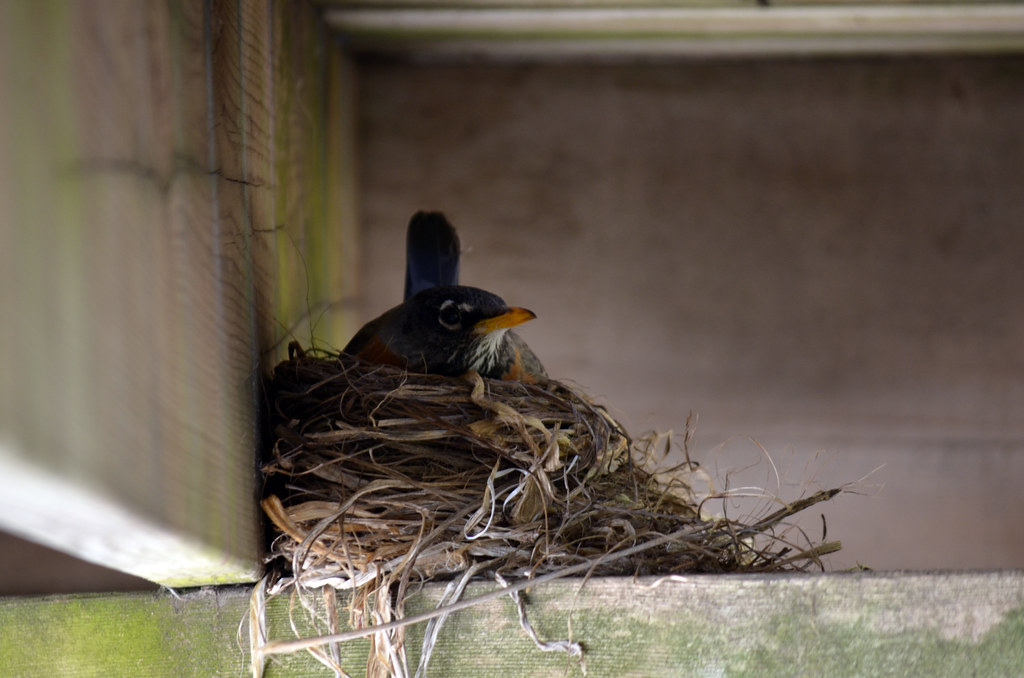
Because of their tendency to nest in man-made structures, you can even put up a small roost and convince robins to nest in a it. You can purchase a robin roost/platform on Amazon here.
Eastern Bluebird – Characteristics, Diet, and Nesting Habits
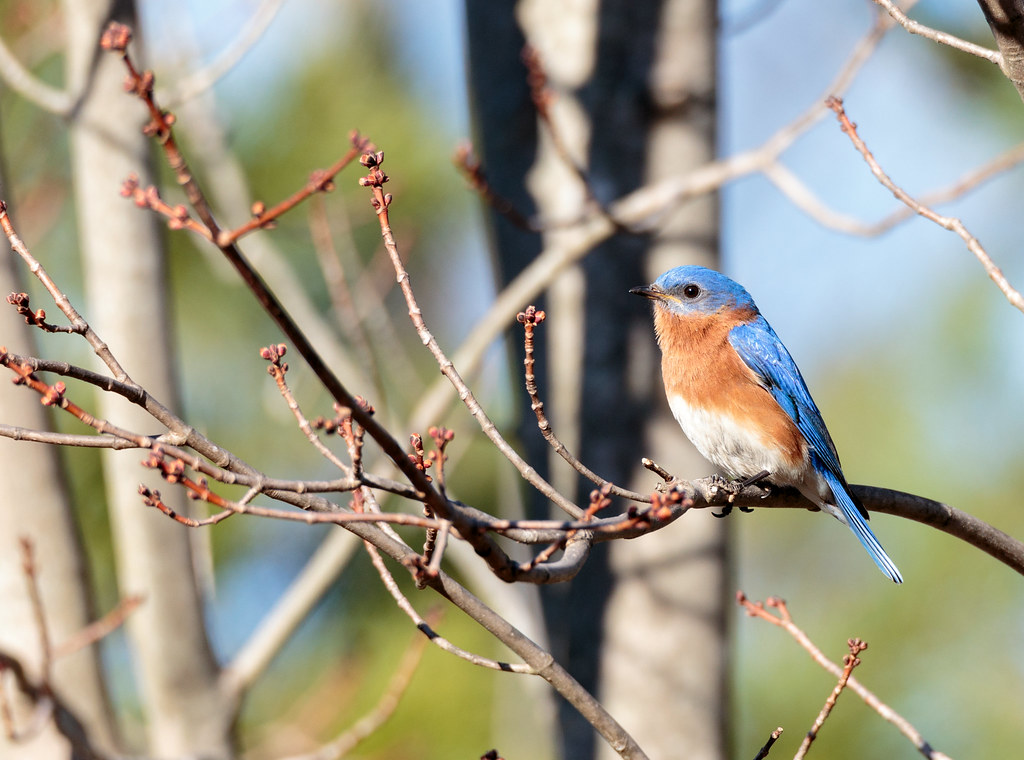
Adult Eastern Bluebirds (both male and female) are between 6.3 and 8.3 inches in height, and they weigh around 1 ounce. They are almost a third the size of American Robins by weight, so they are significantly smaller. Male Eastern Bluebirds have bright blue feathers, an orange chest, a white belly, and a black beak. Females look similar to males, but they have duller blue and duller orange feathers. Females can appear almost gray at times due to their duller feathers.
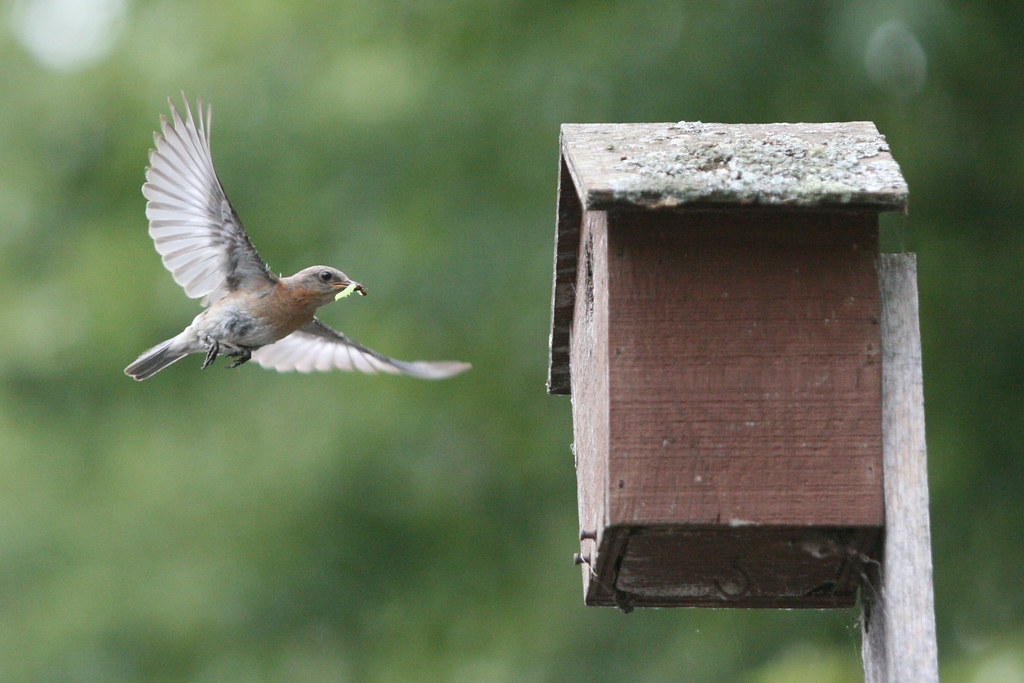
During the nesting season, Eastern Bluebirds spend most of their day hunting insects from low perches (fence posts, tree branches, etc.) They swoop down to the ground to grab spiders, moths, crickets, grasshoppers, and caterpillars. They also enjoy eating berries and some other fruits, especially in the winter (similar to Robins). In fact, while American Robins and Eastern Bluebirds don’t often fight, they do compete for the same types of berries during the winter.
Eastern Bluebirds build neat nests of dried grasses and twigs inside of natural cavities (old woodpecker holes, rotting fence posts, old trees, etc.) and also in man-made nest boxes. Each bluebird pair can build between 1-3 nests per year and their nests usually contain around 4-5 light blue eggs. Bluebird eggs are slightly smaller and lighter in color than robin’s eggs.
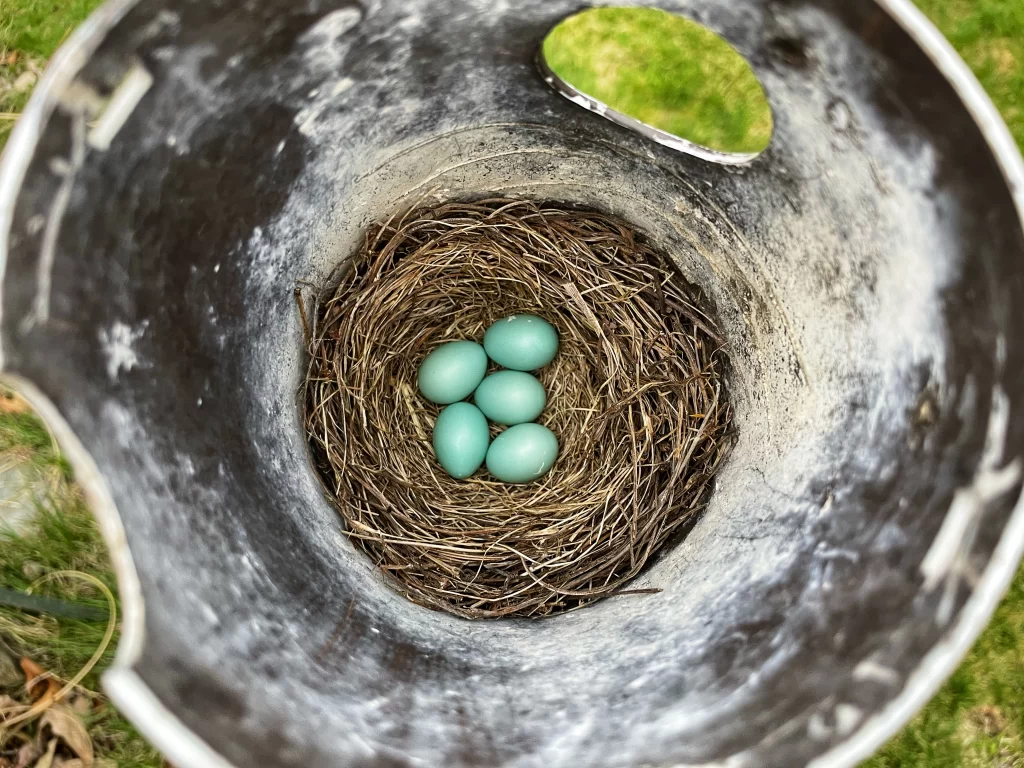
Where Do They Live? – American Robin vs. Eastern Bluebird
American Robin – Typical Range
American Robins are found throughout the entire US, from east to west. They are also found in parts of Mexico year-round, and in most of Canada during the nesting season. Generally, American Robins are a very common sight throughout North America, with a population of around 380 million in total (source).
Eastern Bluebird – Typical Range
Eastern Bluebirds are found throughout the US and in parts of Canada east of the Rocky Mountains. They also live in Mexico and South American countries during the nesting season and when some fly south for the winter. It’s less common to see Eastern Bluebirds than robins on the average American lawn, since their total population is only around 20 million (source).
Where to Look for Robins and Bluebirds
American Robin
As a general rule, you can look for American Robins in grassy lawns on the ground hunting for earthworms. Typically, they will continue this behavior from late winter until the end of the fall. The rest of the year, they will spend most of their time up in the trees, in bushes looking for berries, and at feeders looking for fruit and mealworms.
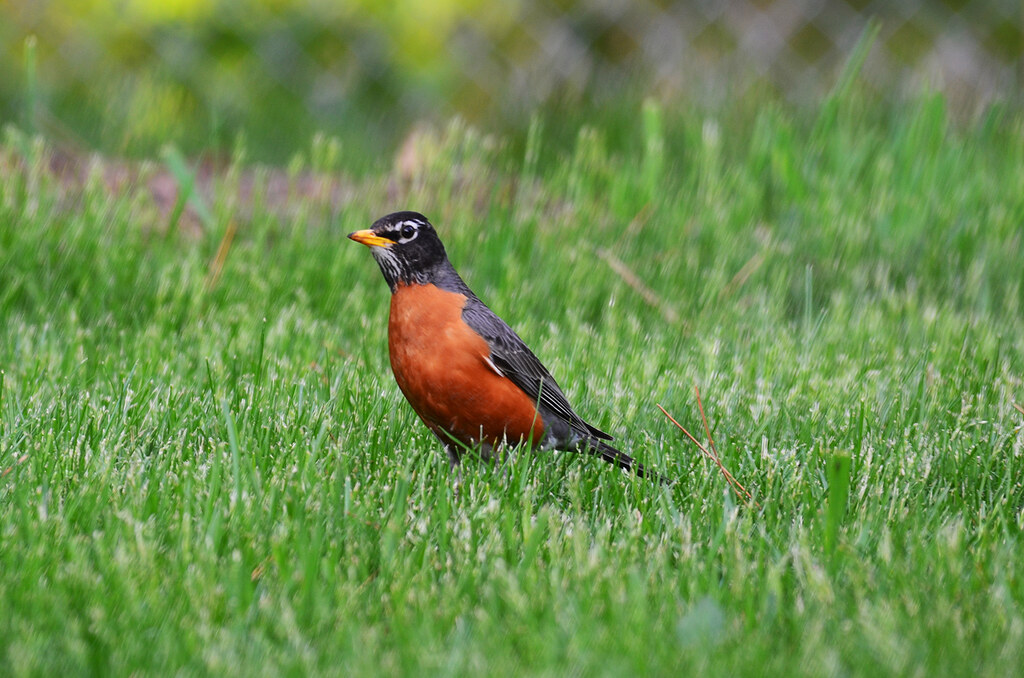
Eastern Bluebird
You can generally find Eastern Bluebirds in rural areas with large open spaces and grassy lawns. Instead of being on the ground to hunt insects, you’ll see bluebirds sitting on a tree branch or fence post before they swoop down to the ground to catch their prey. Since they nest in nest boxes, it’s also easy to see bluebirds at a bluebird house placed in a good location.
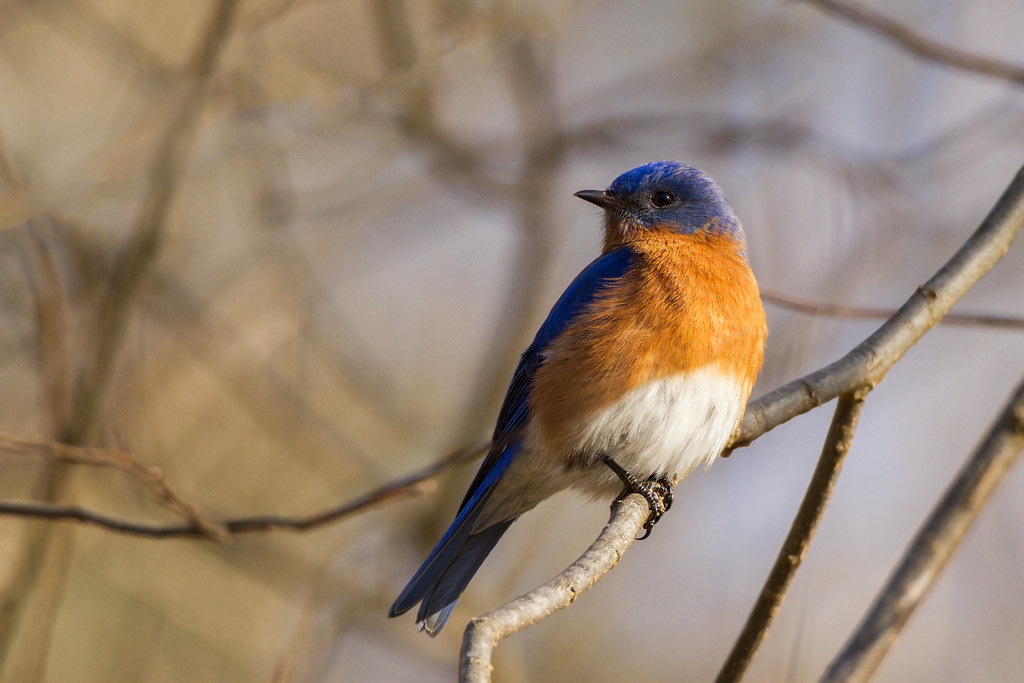
Conclusion – American Robin vs. Eastern Bluebird
That is our robin vs. bluebird recap. As you can see, even though both the American Robin and the Eastern Bluebird are a part of the thrush family of birds, these two species are quite different from each other.
Robins are quite easy to spot on almost any suburban lawn in the USA, and due to a smaller overall population, bluebirds are a little bit harder to come by. However, once you see a bluebird, they are a joy to behold!
If you are interested in how you can attract bluebirds to your own back yard, you are in the right place. We would love to help you learn to attract bluebirds. Check out our article here titled 10 Steps to Become a Bluebird Landlord. This will teach you everything you need to know about these wonderful birds.

